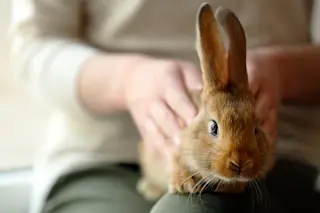It’s no secret that we love our pets — especially dogs and cats. According to a 2011 poll, more than 90 percent of Americans think of their canine and feline friends as family members. But what about pet rabbits? After dogs and cats, they’re the third most popular pet in the U.S. In 2012, a survey by the American Pet Product Association found that 2.5 million households now share space with domestic rabbits.
Despite their ubiquity, there’s still plenty that may surprise you about the cuddly couch potatoes. For one, when properly cared for, they can live as long as 10 to 12 years. And while their long teeth and affinity for gnawing might make you think they're rodents, rabbits are actually in the order Lagomorpha, which includes rabbits, hares and the lesser-known pikas, small mountain-dwellers found in Africa and North America.
Even beyond these bunny basics, there's lots that ...















